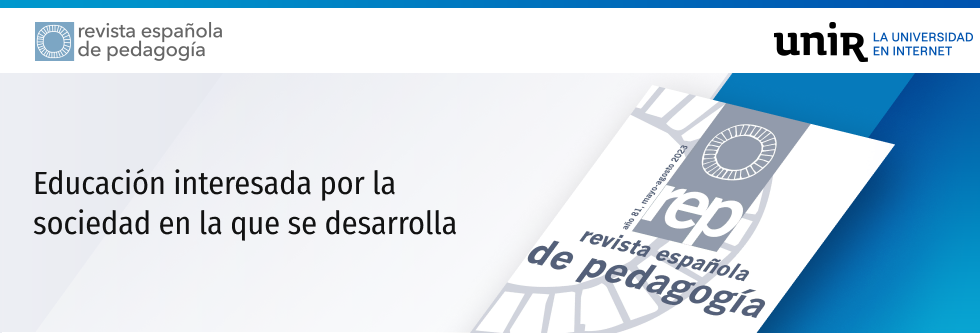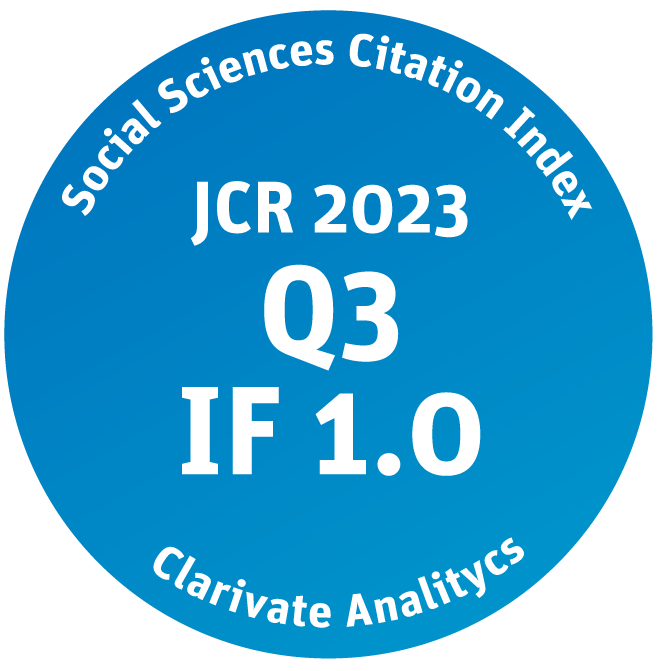Reseña bibliográfica: Martín-Gutiérrez, Á. (2020). La escuela y su entorno en la sociedad del conocimiento. Un estudio focalizado en la Formación Profesional. Octaedro. 180 pp.
Abstract
Contemporary education is in a constant process of adaptation and reconfiguration in response to the challenges of a society that is undergoing a rapid transformation. The author of this pedagogical work, La escuela y su entorno en la sociedad del conocimiento. Un estudio focalizado en la Professional Training, tackles these challenges from the perspective of Professional Training (PT) in Andalusia, Spain. The book contains an in-depth examination of the crucial relationship between PT educational centres and their surroundings, and underlines the importance of social capital and interdisciplinary collaboration for meeting current work demands and promoting an education that is attuned to the needs of the knowledge society.
Through a detailed analysis, Martin- Gutierrez examines the dynamics of collaboration that characterise PT centres and identifies their strengths and areas for improvement. In this context, the work presents a consistent theoretical framework, backed by up-to-date and relevant studies. It also proposes a methodological design for evaluating the current collaboration practices in these centres. Its pages take the reader on an in-depth exploration of PT, from its historical and regulatory roots to its current challenges and proposals for improvement, all of this enriched with empirical data and critical reflections. This review offers an overview of the principal topics and findings presented in the eight chapters of the book. Its aim is to provide a general overview of their content and their relevance in the field of education.
The first chapter develops the approach and rationale of the research. It explains how new demands in the educational sphere emerge from the rapid changes that society currently faces. In this context, participation and cooperation are key elements for improving educational institutions. The author focuses on analysing the relationships of collaboration that PT centres establish with their surroundings, as these ties are fundamental for meeting current employment demands. So, the principal objective of the study is to identify the relations of collaboration that Andalusian PT centre maintain with their surroundings from the perspective of the members of the management team.
The second chapter presents the conceptual framework of the theory of social capital and its link to the knowledge society. Social capital refers to the networks, norms and trust that facilitate coordination and cooperation for mutual benefit. Similarly, the origins of the concept through authors such as Hanifan, Jacobs, Bourdieu, and Putnam are described. Different types of social capital are also listed, such as bonding, bridging and institutional. Finally, there is a reflection on the role of education and PT in generating social capital, at an individual and a community level. Through theoretical contributions and analysis, it is concluded that it is necessary to create networks between educational institutions, communities and businesses to promote the development of educational centres.
The third chapter of the work tackles the concept of educational collaboration and its importance for improving institutions. It distinguishes between internal and external or inter-institutional collaboration. Within this latter category, different fields are described, such as families, businesses, unions, and employment or counselling services or associations, among others, and the role of management teams in establishing these relations is emphasised. Similarly, concepts such as learning communities, networks and centres’ openness to their surroundings are analysed. From all of them, it is deduced that collaboration networks are key to fostering a harmonious environment in the educational centre. Also that teachers can perform effectively in their instructional management and so offer a quality educational service.
Chapter four analyses the development of PT in the European, Spanish and Andalusian context. It reviews regulatory benchmarks such as the LOGSE (Organic Act regarding the General Organisation of the Educational System), LOCFP (Organic Act regarding Qualifications and Professional Training), LOE (Organic Education Act), and LOMCE (Organic Act Regarding the Improvement of the Quality of Education). It also describes initiatives for European participation in PT. Moreover, this chapter explains that PT seeks to link itself more to the productive environment and the job market. This requires closer collaboration between the centres and other agents such as businesses, unions, employment services, etc. Finally, the laws of autonomous regions such as the LEA (Andalusian Employment Act) and the Andalusian PT act are also analysed, which underline the need to adapt the offer to the local demands and to tighten links between the centres and their settings.
Chapter five presents the methodological design of the study. The phases of reflection, planning, execution, analysis and dissemination are described. The research population comprised 383 PT education centres in Andalusia, from which a stratified random sample of 193 centres was obtained.
A closed questionnaire was administered to the management teams. Its content was validated through expert judgement, and its construct through factor analysis. The questionnaire covered the relevance, agents, characteristics, consequences, and prospects of the relationships of collaboration. The reliability, calculated using Cronbach’s alpha, was 0.964.
The results of the questionnaire form part of chapter six. To calculate them, a descriptive analysis of frequencies and percentages was performed. From this, it should be noted that 98% of the management teams placed importance on relations of collaboration, which are principally established with workplace training companies, external companies, local institutions, and other educational centres. In these spaces for collaboration, objectives relating to students and to links with the productive environment are prioritised. Coordination by the management team facilitates these relations. As consequences, they identified the improvement in students’ competences and the building of bridges between professional training and the reality of professional practice. Almost all of them consider it necessary to dynamise the relationships of collaboration.
In chapter seven, Andalusia’s professional training centres are classified into four models depending on how developed their collaborative relationships with their surroundings are. Through quantitative techniques, clusters are identified, from incipient collaborations (model A) to consolidated networks (model D). While it is positive that all of the models value this collaboration as crucial, only 2.11% achieve the most advanced stage. This suggests that building solid ties with the surroundings continues to be a challenge. It is important to analyse what organisational or cultural barriers hinder development between models. Another contribution is the proposal of strategies to strengthen collaboration, both internally (training, joint projects) and externally (agreements, networks). Research into its real impact is required to facilitate the transition between stages.
In summary, the diagnosis of the collaborative models is an important contribution. However, it is necessary to consider in depth the obstacles that most centres face in consolidating these relations and determining effective strategies to promote their continued development. Only in this way can professional training respond flexibly to the demands of society and the productive sector (Rodriguez et al., 2022).
Chapter eight sets out the study’s conclusions. These underline the importance that management teams place on collaborative relationships, their principal characteristics, the need to dynamize them, and the models identified. Theoretical, methodological, and practical implications are then proposed. Guidelines are also offered for strengthening relations between the government, management teams, and actors from the surrounding area. Finally, future lines of research are suggested, such as studying other perspectives, analysing PT-business relations, and the role of networks and ICT.
In conclusion, each of the chapters relates to the approach and theoretical framework of the research. Throughout this book, the importance of collaborative relations between PT centres and their surroundings are underlined and the methodological aspects, results, discussion, and conclusions of the research are considered. Furthermore, there is an overview of collaborative relations in Andalusian PT centres, their characteristics, and the prevailing models.
This review synthesises the principal findings and makes it possible to develop an understanding of the content and contributions of the study.
Citación recomendada | Recommended citation
Rodríguez-Torres, Á.
(2024)
.
Book Review: Martín-Gutiérrez, Á. (2020). La escuela y su entorno en la sociedad del conocimiento. Un estudio focalizado en la Formación Profesional [The school and its environment in the knowledge society. A study focussed on Professional Training]. Octaedro. 180 pp..
Revista Española de Pedagogía, 82(289).
https://www.revistadepedagogia.org/rep/vol82/iss289/26
Licencia Creative Commons | Creative Commons License
Esta obra está bajo una licencia internacional Creative Commons Atribución-NoComercial 4.0.
This work is licensed under a Creative Commons Attribution-NonCommercial 4.0 International License






